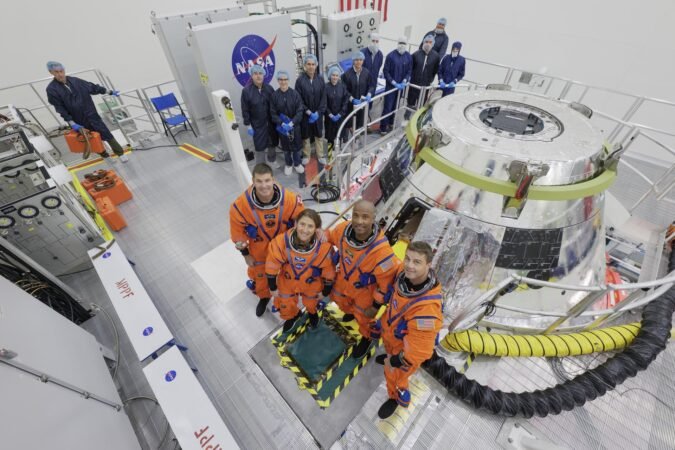Quick Takeaways
-
Training Milestone: The Artemis II crew completed multi-day training in NASA’s Orion spacecraft, simulating launch day and orbital activities to prepare for their mission around the Moon.
-
Hands-On Experience: Astronauts performed critical tests, including communications checks and equipment familiarity with systems they will use in space, enhancing their readiness for real-life challenges.
-
System Compatibility: The training allows teams to verify equipment compatibility and procedures, enabling final adjustments before launch and ensuring a safe mission.
- Vision for the Future: NASA’s Artemis program aims to explore the Moon and lay groundwork for future crewed missions to Mars, benefiting scientific discovery and advancing U.S. interests in space exploration.
NASA’s Artemis II mission is on track, and the excitement grows as the crew trains in the Orion spacecraft. On July 31, astronauts suited up at the Kennedy Space Center in Florida. They embarked on a multi-day training designed to simulate conditions they will face during their Moon mission.
Four astronauts participated in this training. They included three from NASA and one from the Canadian Space Agency. During the suited crew test, they practiced launch day procedures and orbital activities inside Orion. This hands-on experience proves vital in preparing the team for their upcoming journey.
NASA’s acting administrator highlighted the mission’s significance. “Artemis represents the pride and promise of the United States,” he stated. This mission marks humanity’s first trip around the Moon in over half a century. The crew’s training, therefore, embodies a new chapter in space exploration.
Inside Orion, the astronauts performed essential tasks. They conducted communication checks and ensured their suits were functioning properly. The crew connected to the spacecraft’s life support and communication systems for the first time. Testing these systems guarantees that the crew can respond effectively to various scenarios.
Moreover, the crew simulated multiple ground and flight conditions. They faced challenges such as potential leaks and air system failures. This simulation helps astronauts learn how to manage emergencies in real time. Practicing these scenarios enhances their readiness for any situation.
Further training included activities performed with the spacecraft powered off. The astronauts exchanged their spacesuits for cleanroom garments and accessed equipment they will use in space. They practiced stowing their foot pans and familiarized themselves with onboard systems. Additionally, they reviewed personal space and hygiene protocols.
Ultimately, this detailed training plays a crucial role. It allows the crew to familiarize themselves with the hardware and procedures they will encounter during flight. This preparation fosters confidence and teamwork, key elements for a successful mission.
NASA aims to unravel the mysteries of the Moon through Artemis. The initiative also sparks technological innovation that benefits humanity. Scientists anticipate economic advantages from lunar exploration. Furthermore, the Artemis program lays the groundwork for future missions to Mars. Excitement for the mission continues to build, as America prepares to return to the Moon’s orbit.
Continue Your Tech Journey
Explore the future of technology with our detailed insights on Artificial Intelligence.
Discover archived knowledge and digital history on the Internet Archive.
SciV1

